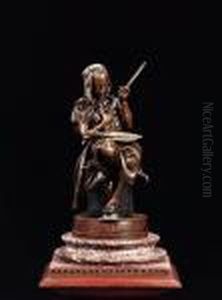Emile Edmond Peynot Paintings
Émile Edmond Peynot was a prominent French sculptor known for his classical and allegorical works. Born on March 29, 1850, in Villeneuve-sur-Yonne, France, Peynot grew up during a period when the arts were undergoing significant transformations due to various movements and the aftermath of the French Revolution.
Peynot studied at the École des Beaux-Arts in Paris, which was the hub of artistic training in France. Under the tutelage of instructors such as François Jouffroy and Paul Dubois, he honed his skills in sculpture, a medium that he would come to master. He began exhibiting his works in the early 1870s, and his talent was quickly recognized by both the public and his peers.
Throughout his career, Peynot created a range of sculptures, including public monuments, funerary art, and decorative pieces. His style was characterized by a blend of classical elegance and a naturalistic approach to the human form, which was in line with the prevailing French academic art tradition of the time. He often drew inspiration from historical and mythological subjects, as well as contemporary themes.
One of his most notable works is the Monument to the Dead of Villeneuve-sur-Yonne, which showcases his ability to convey emotion and narrative through bronze and stone. Peynot was also known for his decorative sculptures, which adorned various public buildings and spaces, including the Paris Opera House and the Hôtel de Ville.
Peynot's contributions to French art were recognized when he was made a Knight of the Legion of Honor in 1886, and he later reached the rank of Officer in 1900. His influence extended beyond his own oeuvre as he taught and mentored the next generation of sculptors.
Émile Edmond Peynot passed away on November 12, 1932, in Paris, leaving behind a legacy of work that remains admired for its craftsmanship and adherence to the classical ideals of beauty and proportion. His sculptures continue to be studied and appreciated for their technical skill and emotional depth, and they stand as testaments to the artistic achievements of the French Belle Époque.

